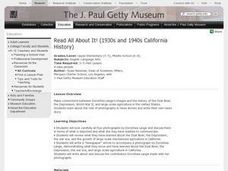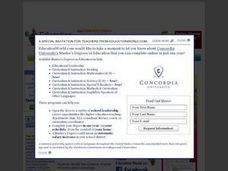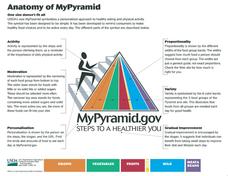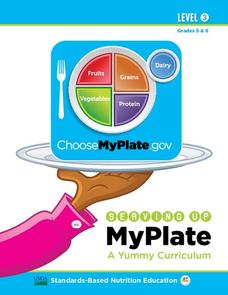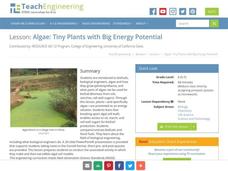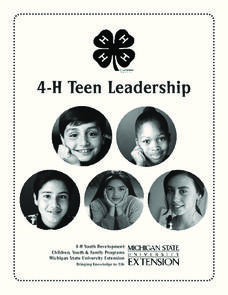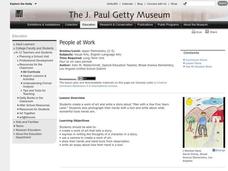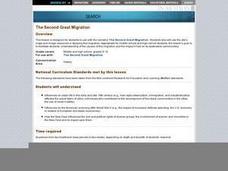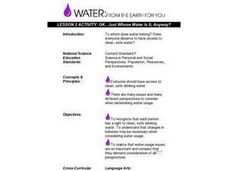Learning Games Lab
How to Use Oil Immersion Microscope
Teach the class how to use a microscope to identify bacteria in food. Scholars explore the different parts of the microscope and learn how to determine total magnification. They walk step-by-step through the procedure of preparing slides...
Learning Games Lab
The pH Scale and Meter Calibration
What are the different ways to test for pH? First, scholars explore the pH scale and a common way to test for acidity and alkalinity. Then, they learn about the importance of pH in food safety and why variance in pH could potentially...
Learning Games Lab
Testing and Adjusting pH
Pupils learn how to control food spoilage by adjusting the food's pH. They see that one of the most dangerous bacteria can grow in food if people don't handle and store food properly. Using knowledge of the bacteria's preferred pH,...
Curated OER
Eggstra Safe Eggs
Pupils study about the bacteria that grow in eggs. They examine what farmers do to keep eggs safe such as providing clean environments in the chicken house.
Curated OER
Read All About It! Events and People of the 1930s and 1940s That Shaped California and the Nation.
Students look carefully at four photographs by Dorothea Lange and discuss them in terms of what is depicted and what she may have wanted to communicate. They review what they learned about the Dust Bowl, the Depression, the war era, and...
Curated OER
Where in the World Is That Volcano?
Identify the Earth's major volcanoes with an earth science lesson plan. Elementary and middle schoolers locate major volcanoes on a world map. Then, in groups, they research how the volcano affects the region in which it is located.
Curated OER
Picture This - Stars Over Hoke
The classroom becomes a safe and inclusive place for your ELLs as they create documents about their lives. Learners create, read, and present story books based on their own personal experiences. They use digital cameras to take...
Agriculture in the Classroom
Understanding the Columbian Exchange Through Old World and New World Foods
If you're interested in teaching your class about the impact of the Columbian Exchange on contemporary society, this is worth a look. The plan begins with an introduction to the topic, which stems from a cell phone poll...
Humanities Texas
Primary Source Worksheet: Tip O'Neill, "Epilogue: What I Believe" from Man of the House
The epilogue to former Speaker of the House Tip O'Neill's memoir provides readers with an opportunity to practice their informational text reading comprehension skills.
Elementary CORE Academy
Food Foldable
There's nothing as satisfying as a crunchy carrot or a juicy apple! Teach your middle and high schoolers about healthy eating habits with a set of nutrition activities. After analyzing the model of the food pyramid, learners apply the...
US Department of Agriculture
Serving Up My Plate
Within three nutrition-themed, inquiry-based learning opportunities, pupils take notice of their eating habits; delve deep into the five food groups, gain experience in planning meals, participate in a taste test, and explore ads...
Achieve
Corn and Oats
How much land does a parcel hold? How much fertilizer does it take for a field of corn? Pupils answer these questions and more as they apply ratio reasoning and unit analysis.
Teach Engineering
Engineering and the Periodic Table
Elements, to the rescue! Scholars first review the periodic table, and then learn about the first 20 elements and their properties and uses in the fourth of six lessons in the Mixtures and Solutions unit. Applying their newfound...
Teach Engineering
Algae: Tiny Plants with Big Energy Potential
My, what big energy potential you have! Scholars learn about the energy potential of using algae as a biofuel. A PowerPoint presentation first describes the structure of algae and then how researchers use algae as biofuel to produce energy.
Michigan State University
4-H Teen Leadership
Take your 4-H teens to the next level! Help them learn how to be an active part of their communities with a teen leadership development unit. Individuals, together with school and community partners, create and execute a service-driven...
Reed Novel Studies
Little House On The Prairie: Novel Study
Laura Ingalls Wilder memorialized life in the American West with her Little House on the Prairie series. Readers explore the first book in the series using a novel study guide. Along with standard text-based questions, scholars...
Reed Novel Studies
Old Yeller: Novel Study
Fred Gipson's Old Yeller tells of a stray yellow dog who becomes the best friend a boy could ever have. While reading the novel, learners complete sentences with new vocabulary words, answer comprehension questions, and create...
Curated OER
Don't Trust Your Eyes
Students brainstorm a list of possible actions that they could do to protect the water resources from pollution. They create hypotheses and conclusions by completing experiments and observing different pollutants.
Curated OER
Water Pollution Lesson Plan: Don't Trust Your Eyes
Students develop a list of actions they could perform that would protect our water resources from pollution. They formulate hypotheses, conduct experiments and draw conclusions about actual pollutants found in our water supply.
Curated OER
The Rancho Period
Third graders describe how the Rancho period of settlement left its mark on the development of the local community.
Curated OER
Future Conditional
Students examine how toxic pollutants affect environmental and human health. They define key terms, watch a video, and answer discussion questions.
Curated OER
People at Work
Students create a work of art and write a story about "Man with a Hoe Five Years Later." students also photograph their hands with a tool and write about what wonderful tools hands are.
Curated OER
U.S. History: The Second Great Migration
Pupils examine the migration of rural African Americans to northern cities following World War !!. After predicting the effects of cultural and economic factors, they write essays explaining the impact of migration on communities and the...
Curated OER
OK...Just Whose Water Is It, Anyway?
Students recognize that each person has a right to clean, safe drinking water. They explain that changes in behavior may be necessary when considering water usage. They role play a water rights courtoom dispute.






